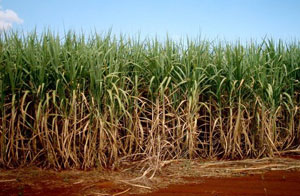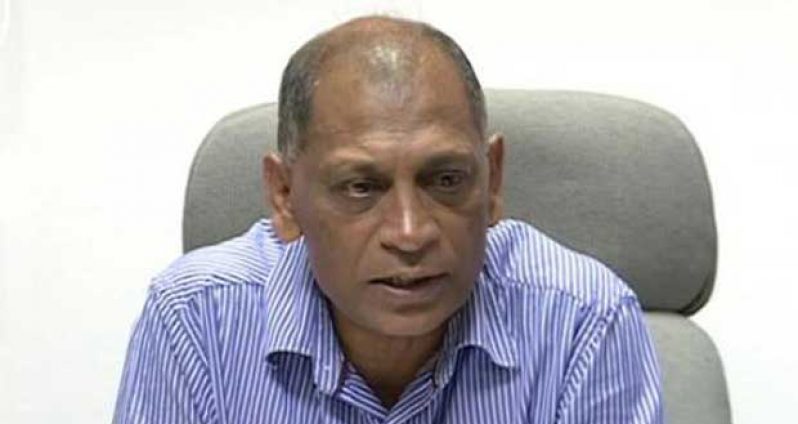EXTENSIVE focus is being placed on the production of bioethanol as work continues on crafting a legislative framework that will create a US$100 million market from the sale of blended fuel for the transportation sector.
But the work begins with the upgrading of all the sugar factories throughout Guyana. This is one component of an overall plan the current Government will roll-out if re-elected to office, preferably with a majority in the Parliament.

And the funding will come from the minimum sum of $20 billion earmarked in the People’s Progressive Party/Civic’s (PPP/C) Manifesto: PPP/C Vision 2.0, to diversify the industry and return it to economic vibrancy.
Speaking with the Chronicle, Agriculture Minister Dr Leslie Ramsammy acknowledged that significant work has been done on the Skeldon Sugar Factory in Region Six (East Berbice-Corentyne), and part of the $20 billion will be spent on further work to ensure the factory functions at optimum.
The Guyana Sugar Corporation (GuySuCo) Modernisation Project at Skeldon is to be the lifeline of the sugar industry in the future.
The project involves expanding cane cultivations, the establishment of a refinery and facilitating the co-generation of electricity for the national grid.
The factory enhancement will see the boiler systems at the plants at Albion and Rose Hall, Region Six; Blairmont, Region Five (Mahaica-Berbice); Wales and Uitvlugt, Region Three (Essequibo Islands-West Demerara); and Enmore, Region Four (Demerara-Mahaica) being upgraded to improve their respective capacities.
In some cases, new boilers will be added to improve production capacity over a 24-hour period. Dr Ramsammy said the broader intention is to equip the factories to be on slate as the Industry moves to diversify its commodities.

“In the case of Albion, we have made it very, very clear. Albion will become a major producer of bioethanol. The plant there is a small plant but it allows us to develop the skills to operate a bioethanol plant. So, GuySuCo workers are gaining valuable experience in running a bioethanol plant. We are also doing work to ensure that the bioethanol plant, once we are very familiar with how it operates, we have the skills to expand it.”
The objective, the Minister explained, is to produce bioethanol for local commercial use, supporting value-added in the industry while aiding in its economic buoyancy and health.
Government spends about US$5 million annually on the purchase of ethanol. The ethanol imported is used primarily in food production, cleaning of hospitals, factories and laboratories.
ENOUGH FOR LOCAL NEEDS
The amount of ethanol produced by the Albion demonstration plant is enough to meet the needs of GuySuCo, but the Corporation, Dr Ramsammy said has the capacity to satisfy the national demand, and creation of a new industry. This is the direction that he said Government is moving, and it is doing

so in a grounded rather than an ad hoc manner or plunging head-on into the business.
Prime Minister Samuel Hinds, who also has responsibility for the Energy sector, has been working with the support of his technical officers, to craft a legislation to promote blended fuel in Guyana, more particularly a 20 per cent bioethanol mix.
Currently, 25 vehicles from GuySuCo and the Ministry of Agriculture, including the one driven by Minister Ramsammy are powered by blended fuel.
The legislation in the making, though new to Guyana, is not new to countries the world over. Jamaica has passed a law allowing for a 20 per cent blending in fuel for its transportation sector. A similar legislation has been enacted in Brazil, but with no a ceiling, while some countries in Europe permit a mixture of up to 40 per cent bioethanol.
In the case of Jamaica, there were some hiccups. The 20 per cent bioethanol was supposed to come from its sugar industry, but it was unable to generate that amount consistently.
“They went too fast in it without developing the expertise. We have spent the last two years developing the expertise. Our intention is that when we can produce enough bioethanol that the policy decision is also being made that we make it law that all fuel sold for transportation must be blended fuel. We have to make sure we have the capacity; we do not want to create a law then we have to import another product. So we are going to do this in phases; when we can produce enough ethanol, we will also bring in the law,” Dr Ramsammy told this publication.
Banking on the idea becoming reality, there will be no need for changes in the engine of the most modern vehicles on the market in terms of adjustment to operate with blended fuel, but for the old one, a certain yes!
GIVEN MARKET
“So we have a given market, a local demand that you can create by a policy decision, which instead of importing all the fuel for the transport industry, you pass the law for blended fuel then provide the second component for a blend through a local industry,” said Dr Ramsammy, who is a microbiologist by profession.
This will enable Guyana to produce enough bioethanol to meet local demand, and the US$5 million that it spends annually can be channeled into enhancing the operations of GuySuCo.
But this aside, the potential for a thriving industry is great as the transportation sector has been rapidly growing with some 20,000 vehicles being imported into Guyana every year.
“The legislation will create a new industry and as the transport industry gets bigger and bigger, so will the demand. It is not going to get smaller; the demand for transportation is going to get larger and larger and the demand for 20 per cent bioethanol as we speak is about US$100 million,” he said.

It might require private investors to ensure steady supply, but Dr Ramsammy said GuySuCo can meet the demand, noting that this is why the government has been talking about opening up of the Intermediate Savannahs and Canje Basin.
An optimistic Dr Ramsammy contended that if all goes well, Guyana can become an exporter of clean energy as many countries are now trying to move away from dependency on fossil fuel
In addition to bioethanol, bagasse is used to fire the factories, but the Agriculture Minister said there is a large mass of the substance which is an environmental problem.
These, he said, can be converted into energy, which can be used by GuySuCo.
He also pointed that not only the Skeldon factory but several other estates such as Albion and Enmore, are being considered for co-generation, using bagasse to produce energy.
These are all part of efforts by the Sugar Corporation to diversify its products to withstand the vagaries of sugar prices on the world market. The commercial production of bioethanol, Dr Ramsammy said, is all but a small component of the biofuel industry when oil is discovered here.
By Tajeram Mohabir



.jpg)








